Underrated Italian Towns 2023: Great places to visit or use as base just outside Italy’s overcrowded famous sites
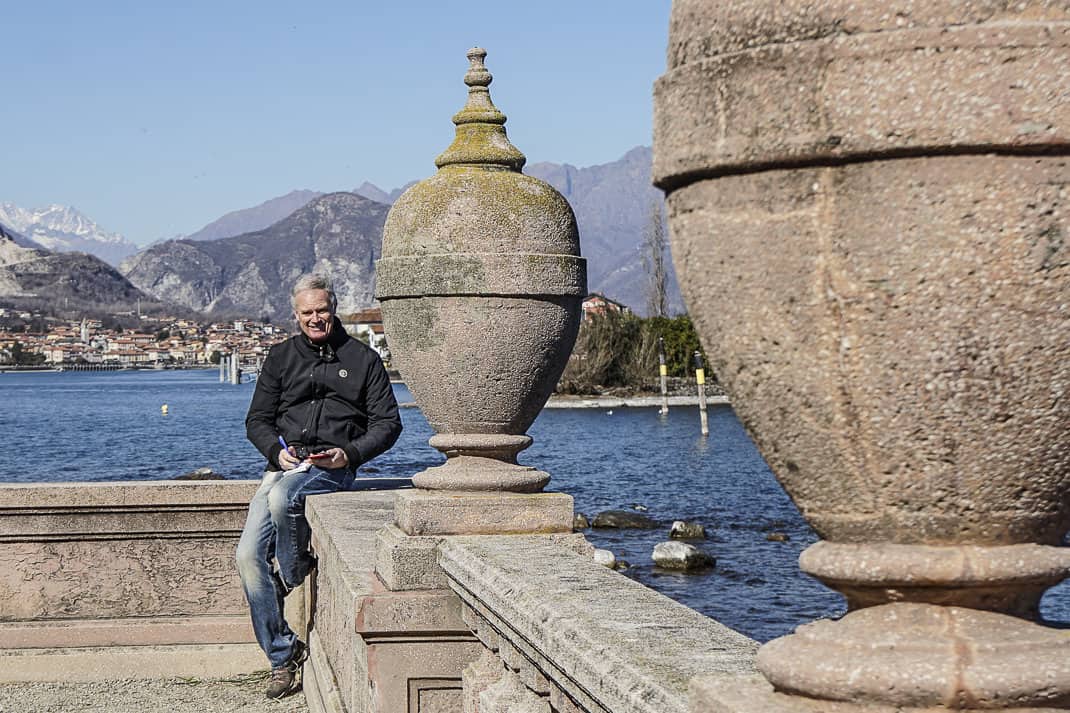
Did everyone get what they wanted for Christmas? No? A paisley tie? A frying pan you hit your husband with? OK, maybe not. I understand. Well, hopefully some of you got one of the best gifts in the world.
A trip to Italy.
Next year is a great time to come. This year Italy was packed to the olive orchards. It took in all those postponed vacations from the previous two Covid-killing years plus new reservations. Today Italy has virtually no travel restrictions. If you do have plans to visit my lovely adopted country, get off the well-trodden quadrangle of Milan-Venice-Florence-Rome.
This is where I come in.
Every year I do a list of Underrated Italian Towns. These are all places I visited this year and highly recommend. Some are little-known bases to explore elsewhere. They are from seven different regions and almost none is on the main tourist route. They likely don’t even sell T-shirts. All have something special to offer. I’ve included links to blogs where I wrote more extensively about them. Because they are so equal in worthiness, I list them in alphabetical order.
Venite (Come).
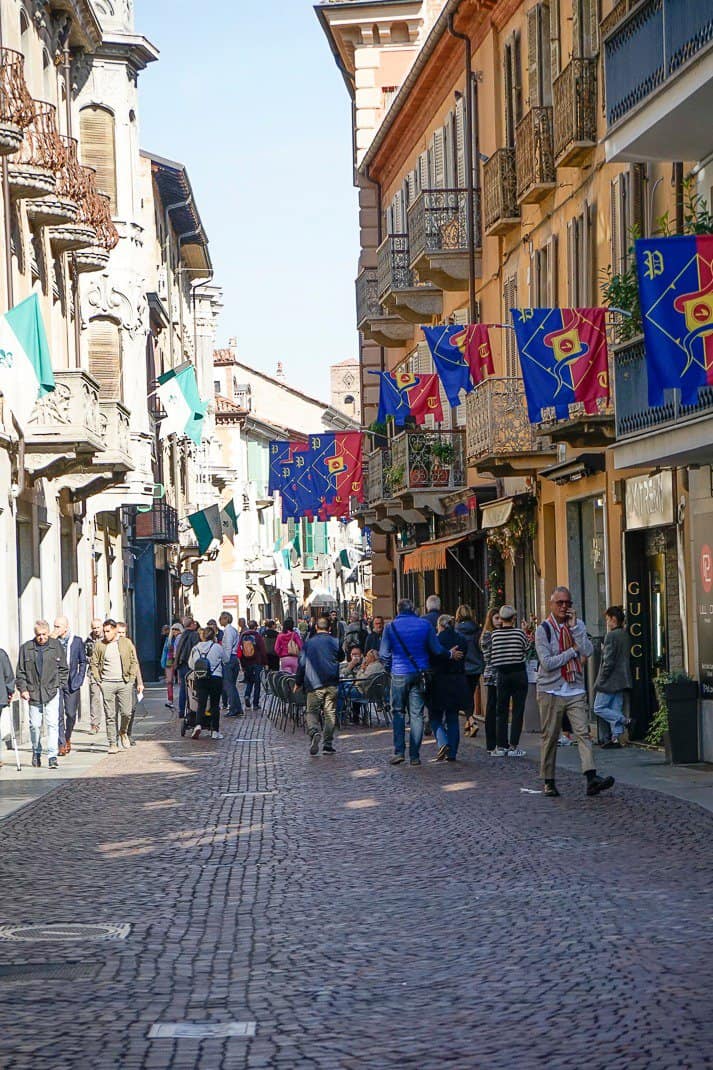
Alba, Piedmont (pop. 31,500)
If you love Italian wine, particularly Barolo, arguably its most famous, you’ll find your way to Le Langhe. That’s the zone in the southern end of the Piedmont region that’s about the size of New Jersey and home to more than 800 wineries.
Alba is Le Langhe’s capital.
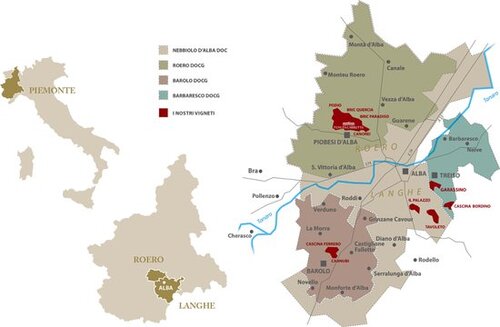
It’s a rich, sparkling clean town with porticoes that remind you of a smaller Turin. The long, cobblestone Via Vittorio Emanuele II takes you past high-end shops such as Rolex, Modus and Falconeri.
Use Alba as a base for exploring wine country. Take your rental car (highly recommended) and explore on your own or organize tours through Consorzio Turistico Langhe Monferrato Roero at Piazza Risorgimento 2. They can also organize hunts for the area’s famous truffles, those white and black mushrooms that are the highest delicacy of the Italian kitchen – with prices to match.
Come in October when there’s a truffle festival every weekend until mid-November. Truffle hunting season is September to December for white and May to December for the more reasonably priced black.
How to get there: Drive. You’ll need a car to tour the surrounding wineries. Alba is 35 miles (60 kilometers) from Turin and 90 (150) from Milan. Car rentals in Turin start at about €26 a day. From Milan they start at €23.
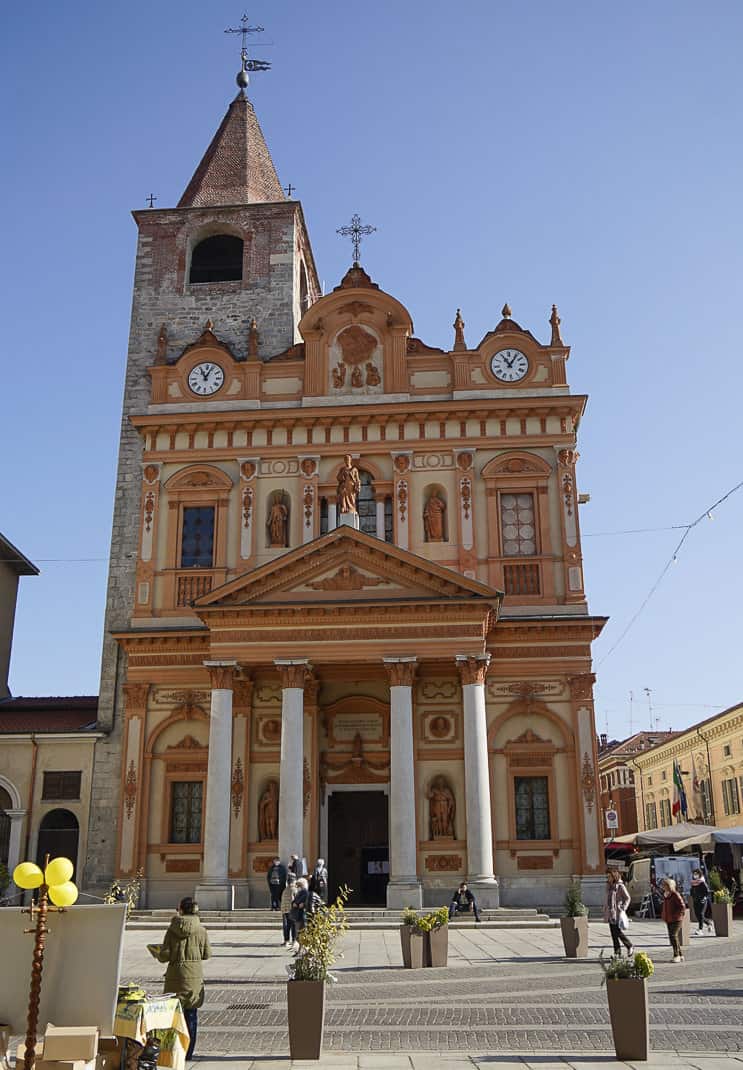
Borgomanero, Piedmont (22,000)
If you want to explore Northern Italy’s superb lake country, consider Borgomanero as your base. It’s six miles (10 kilometers) west of Lake Maggiore and 60 miles (100 kilometers) to Lake Lugano further east. You’ll find few tourists here and none of the schlocky souvenir stands you’ll tire of on the lakes.
What you’ll find is a small, middle-class Italian town where locals hang out at Piazza Mortiti, anchored by Parrocchiale di San Bartolomeo, an orange and yellow Baroque church refurbished in 1680 and looks like a giant gumdrop.
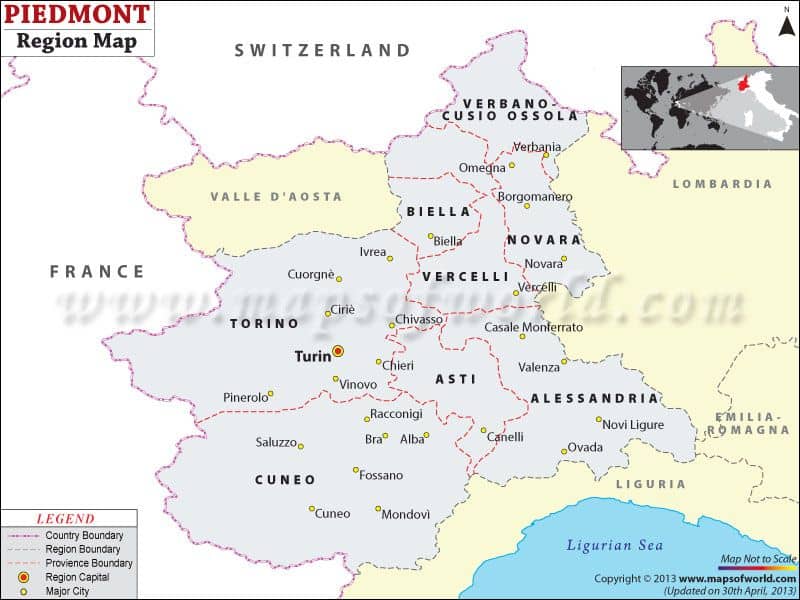
Sites are few but you come for the authenticity. You can visit the Museo Come Eravamo (How We Were), a reconstruction of an Italian peasant home complete with an antique sewing machine and wood stove. You can also venture out of the center to Via Francigena, the ancient road pilgrims have taken from England to Rome since the Middle Ages. Near it you can find the 11th century Chiesa di San Tommaso with its excellent frescoes.
One of the best parts about the town is it’s in Piedmont. As in Alba, Barolo wine is everywhere. Nebbiolo, the grape that makes Barolo, is most restaurants’ table wine. Check out Hostaria Orcobacco for some authentic Piedmontese cuisine.
How to get there: Four daily trains from Milan. The 90-minute trip is €8.15.
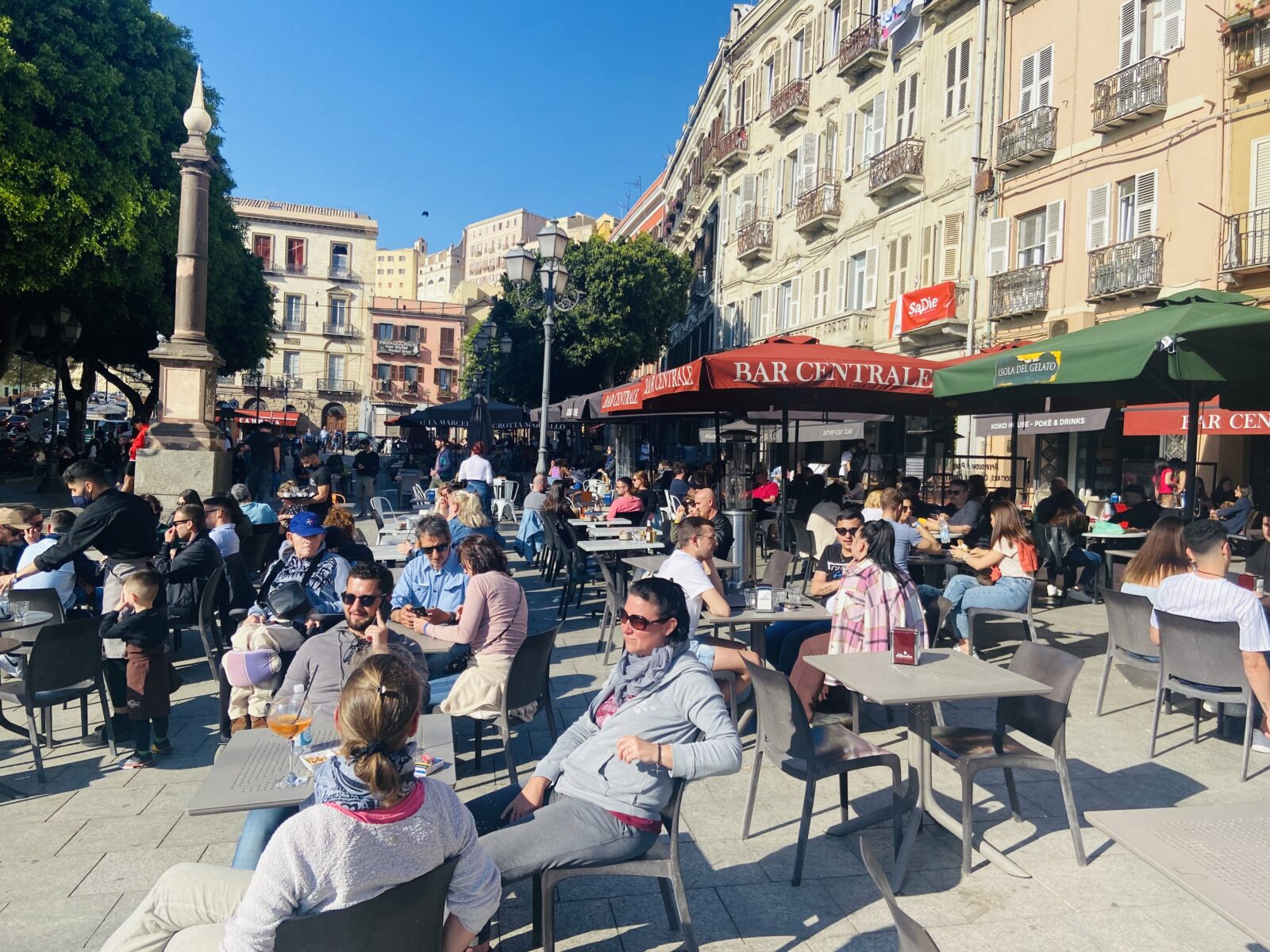
Cagliari, Sardinia (155,000)
In July and August Italians flock to Sardinia like starving cats to a giant bowl of milk. They head to the lovely beaches, particularly Costa Smeralda in the northeast corner. Many ignore Cagliari, Sardinia’s charming capital in the south.
Piazza Yenne is Cagliari’s pulse. It’s surrounded by cute B&Bs, bars and restaurants with outdoor seating under shady trees. Not far is a tall staircase that takes you to Il Castello, a sprawling neighborhood of narrow alleys with every corner having a spectacular panoramic view of the city below and the mountains beyond.
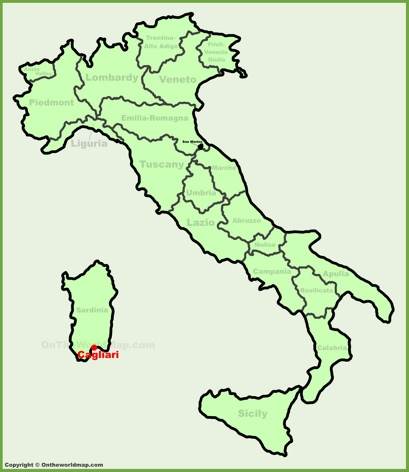
You can’t miss Torre dell’Elefante where the Spanish hanged severed heads of disobedient locals during their occupation in the 14th century. Not far away is the Bastione di Saint Remy, a large terrace with a beautiful view that’s lit up every night for romantic strolls.
Cagliari (pronounced CAUL-gyi-ree) is also ideal for tasting unique Sardi cuisine such as burriccu (donkey), cavallo (horse), porceddu (suckling pig) and roast kid (baby goat). I highly recommend Is Femmines, our favorite restaurant in town.
Try to go when we did during the Festa di Sant’Efisio, a wild parade held every May 1-4. Sant’Efisio has been Cagliari’s patron saint ever since he cured the bubonic plague in the city in 1656.
How to get there: RyanAir and Volotea have hour–long flights from Rome starting at 53 euros round trip.
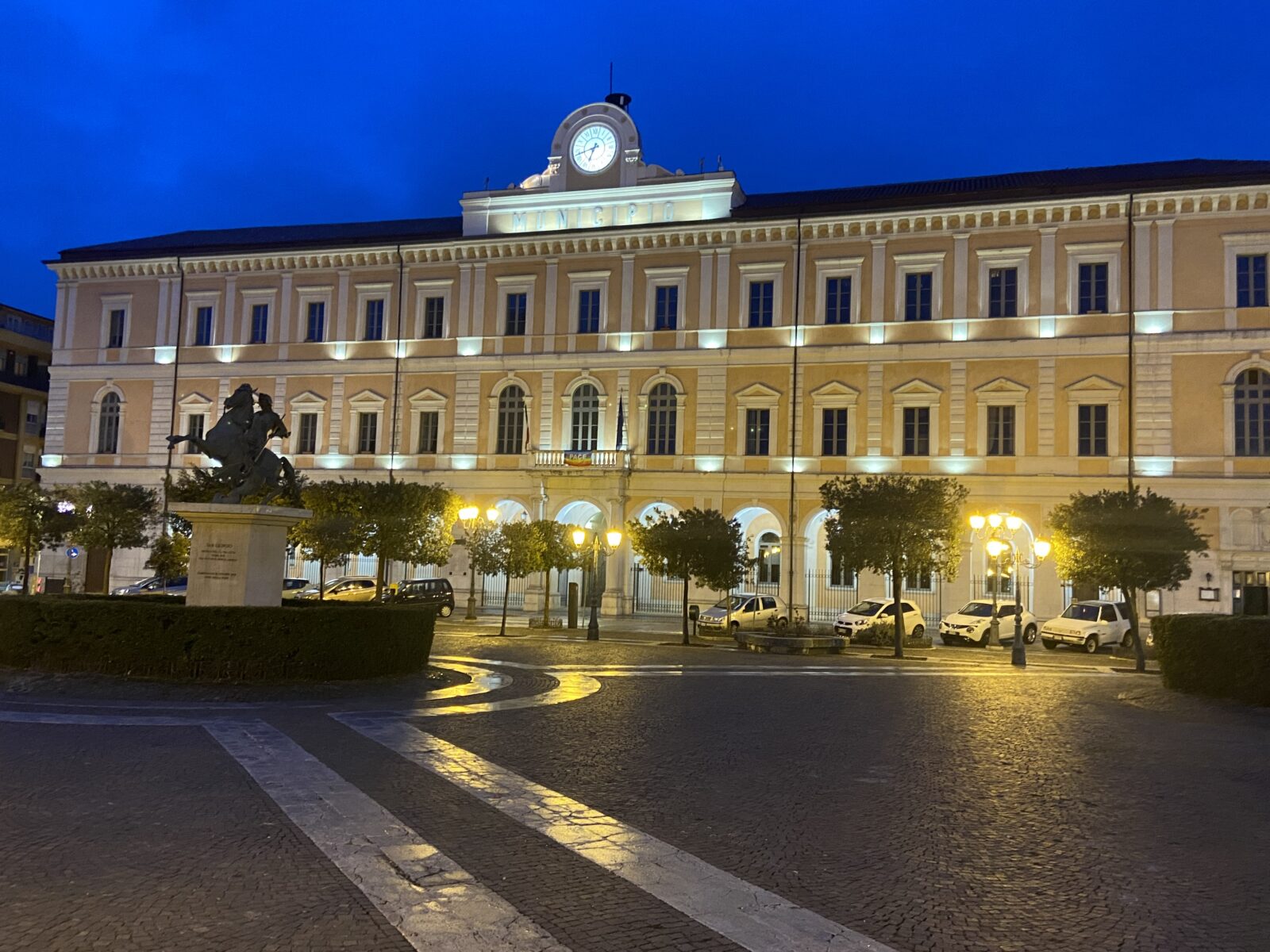
Campobasso, Molise (50,000)
You want a reasonable-sized town off the beaten path but still plenty to do? Come to Campobasso, the capital of Molise, the least-visited region in Italy and its second smallest. How undiscovered is it?
Its tourist office is about the size of a closet.

Molise is 55 percent mountains and agriculture remains the main source of income. The region experienced huge exoduses after the two World Wars, including the family of Roberto De Niro from the nearby village of Ferrazzano.
Campobasso has not been abandoned. Located 120 miles (193 kilometers) from Rome and 40 miles (70 kilometers) from the Adriatic Sea, Campobasso has a small Centro Storico with all the requisite windy alleys and pathways.
Hang out on tree-lined Piazza Emanuele II next to Palazzo San Giorgio, the beautiful municipal palace. Or go to nearby Piazza Gabriele Pepe and have a glass of Tintilia, Molise’s trademark red wine.
The city is rife with excellent, affordable restaurants such as Osteria28 built in a cave-like building that’s been around since 800 A.D. And be sure to reserve one of the funky rooms in Palazzo Cannavina, a 500-year-old palace.
Campobasso is mostly used as a base for hiking the Tratturi, sheep migration paths that cover 1,860 miles (3,100 kilometers) in Central and Southern Italy and have been around since pre-Roman days. But good luck finding a map.
As I said, it’s the least-visited region in Italy.
How to get there: About a dozen trains a day leave from Roma’s Termini station to Campobasso. The 3 ½-hour trip, with a change at Rocco Ravindola, starts at 16.05 euros. It’s better to rent a car to tour the countryside. The journey without stops is 2 hours, 45 minutes.
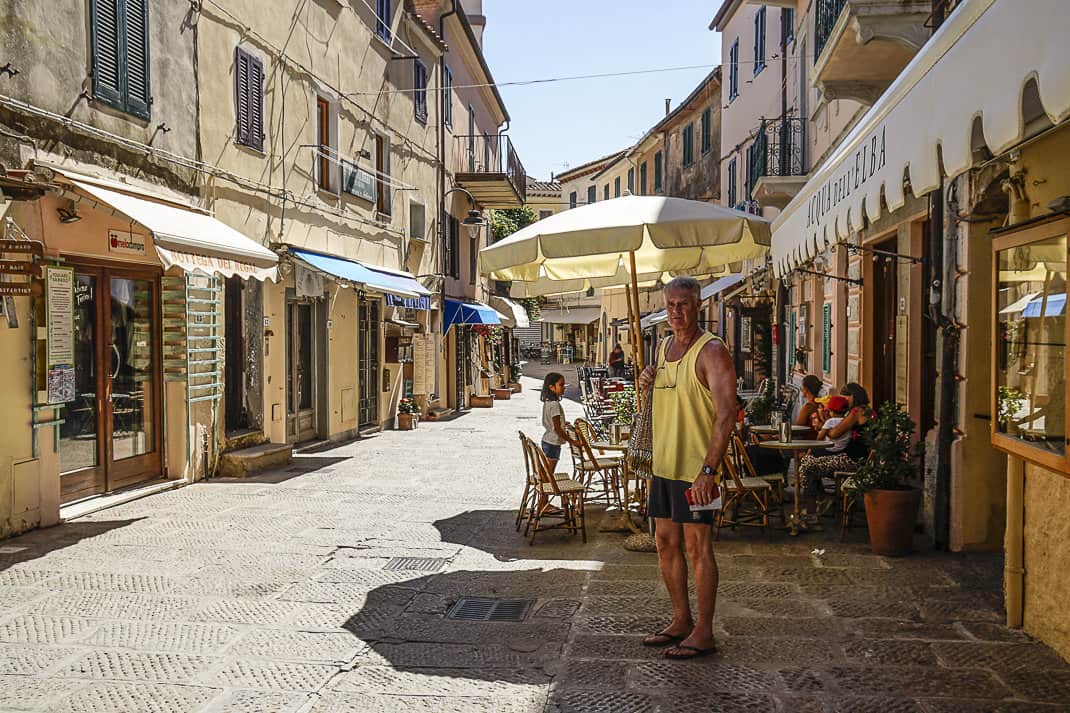
Capoliveri, Tuscany (4,000)
In summer many Romans and Tuscans head to Elba, a beach-ringed island 30 miles (50 kilometers) off the coast of Tuscany and Napoleon’s exiled prison home for nine months. Capoliveri is Elba’s most charming village. Located on the southeast end of the island, it’s a collection of pastel-colored buildings connected by narrow alleys with flowers pouring over balcony planters.
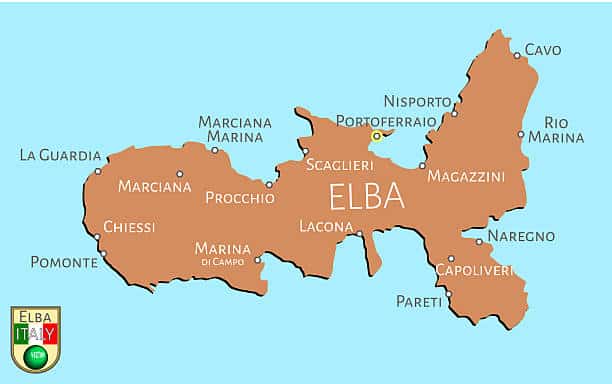
A pedestrian street empties into Piazza Giacomo Matteotti, ringed by restaurants and gelaterias. It’s also a jump off to some of Elba’s best beaches, particularly Innamorata beach, 300 meters of golden sand set against a backdrop of tall trees.
After the beach, come hang out in the town situated 170 meters above the sea. Public markets, pubs and wine bars line the streets as do tons of people during peak months of July and August.
Come in late spring or early fall or visit during the hot pausa afternoon when everyone is at the beach. It’s a lovely, quiet Italian village where you can cool off with a cold beer or fruity gelato.
There’s a fierce independence of the people in this former mining town named for Caput Liberum, Latin for the Italian Capo Libero or Free Cape. During the summer, Capoliveri has arguably the island’s best nightlife and while a car is highly recommended on Elba, parking is nearly impossible in Capoliveri at night. Look to take one of the infrequent buses.
The Grape Festival is held in late September-early October where games, music, food stalls and buckets of wine fill the streets.
How to get there: Reach Elba by ferry from the port town of Piombino Marittima. It’s 110 miles (178 kilometers) from Florence, 160 miles (262) from Rome and 240 miles (403) from Milan. I paid 38.70 euros for the 3-hour, 45-minute train ride from Rome to Piombino and 13.50 for the hour-long ferry ride to Elba. Ferries leave hourly and no need to reserve except in August or a summer weekend. You can also fly to Pisa and drive the 70 miles (112 kilometers) to Piombino.
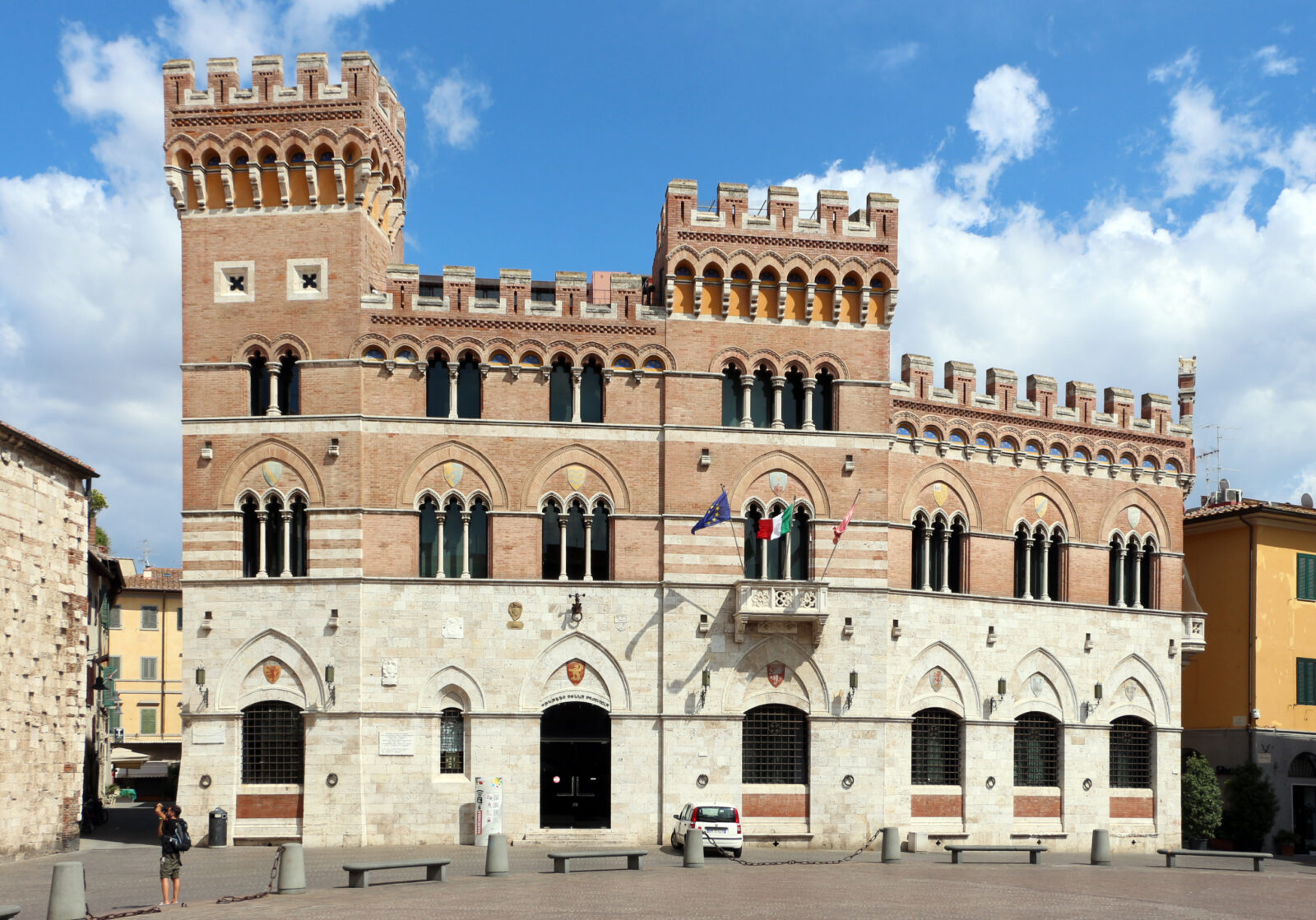
Grosseto, Tuscany (82,000)
If you’re going the 210 miles (350 kilometers) from Rome to Lucca, home of maybe the most famous city walls in Italy, consider Grosseto as a nice halfway point. We stopped for lunch and plan to make it a destination some day.
Located in the southwest corner of Tuscany, it’s 110 miles (180 kilometers) from Lucca. It’s also a jump-off point for all kinds of outdoor activities. It’s near terrific hiking and climbing in Maremma Natural Park and is only nine miles (15 kilometers) from the Tyrrhenian Sea. Check out the sandy beach at Spiaggia le Marze.
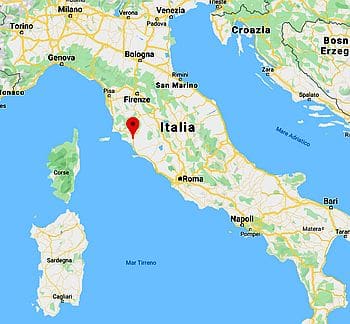
Grosseto is a walled city where inside you take long, quiet walks on narrow roads dating back to 800 A.D. Hang out at Piazza Dante and stare at the Palazzo Aldo Brandeschi, home of Grosseto’s provincial government. It looks like a four-story medieval castle despite being rebuilt in 1921.
The city is so picturesque it was used in scenes in “The Talented Mr. Ripley.”
Grosseto is famous for its bread, particularly schiaccia (oven-baked bread in oil). The local cattle are used in the making of Tuscany’s famous Florentine steaks.
How to get there: Numerous daily trains go direct from Rome to Grosseto. The two-hour trip starts at €13.50. The 3-3 1/2-hour ride from Florence starts at €17.40.

Isola Bella, Piedmont (40)
That’s right, population 40. That’s all who live on this island 400 meters off the shores of Stresa in Lake Maggiore. Isola Bella is the closest place to a tourist trap on this list and I apologize ahead of time. But not many who visit this beautiful lake and hang out in tranquil but crowded Stresa ever take the ferry over.
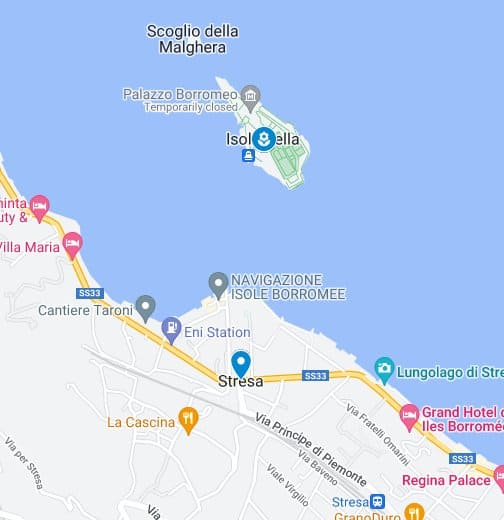
It’s worth a couple hours to hang out. Walk the windy pathways, climb the narrow staircases and look at the spectacular views of the cobalt lake and the palm trees swaying on shore. During the summer, elaborate gardens dating back to the 16th century are open atop the palace.
This island was just a big rock until 1632 when the Borromeos, a family of Milan nobles, bought it and its two nearby sister islands, Madre and Superiore. They built a huge palace which became the place to see and be seen in 17th century Milanese circles.
It thankfully does not have many schlocky souvenir shops or overpriced restaurants. I highly recommend sitting outside with a cold craft beer at Lemontree, a funky bar decorated with rock posters.
How to get there: Numerous direct trains daily from Milan to Stresa. The trip takes about one hour for 8.60 euros. Ferries leave from Stresa’s dock. The five-minute ride is €2-4.

La Spezia, Liguria (94,000)
Sometimes Italian cities are great to visit merely as a base to see someplace else. Take La Spezia, a pleasant port town on the Gulf of La Spezia and only nine miles (15 kilometers) from Riomaggiore, the southernmost town of the Cinque Terre.
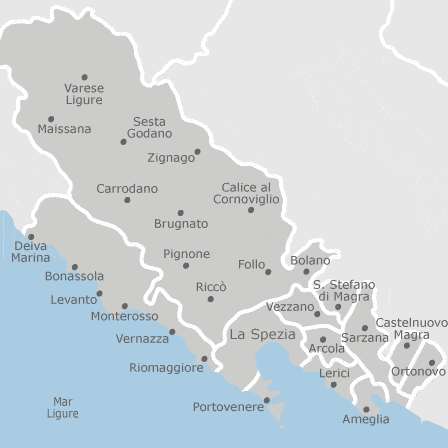
Avoid the crowds and the prices of Cinque Terre hotels and B&Bs and find a room in La Spezia. Or just stop off on your way back to exhale from your long hike or claustrophobia. Sit on the picturesque port and have a glass of Pigato, Liguria’s famous white wine made from the Vermentino grape.
Liguria is home to Italy’s largest naval base but it’s also a great place to hang out. Its Centro Storico has the ubiquitous windy alleys lined with little, inexpensive trattorias serving up some of the best regional garb in Liguria. Dal Pescatori, a local institution on the port, has great seafood at about half the price you’ll find in Cinque Terre.
Most importantly, it has a convenient train station that takes you up and down Cinque Terre.
How to get there: Trains leave about every 30 minutes from Florence. The 2-hour, 20-minute ride starts at €14.40. Frequent trains leave from Milan. The four-hour ride starts at €21.
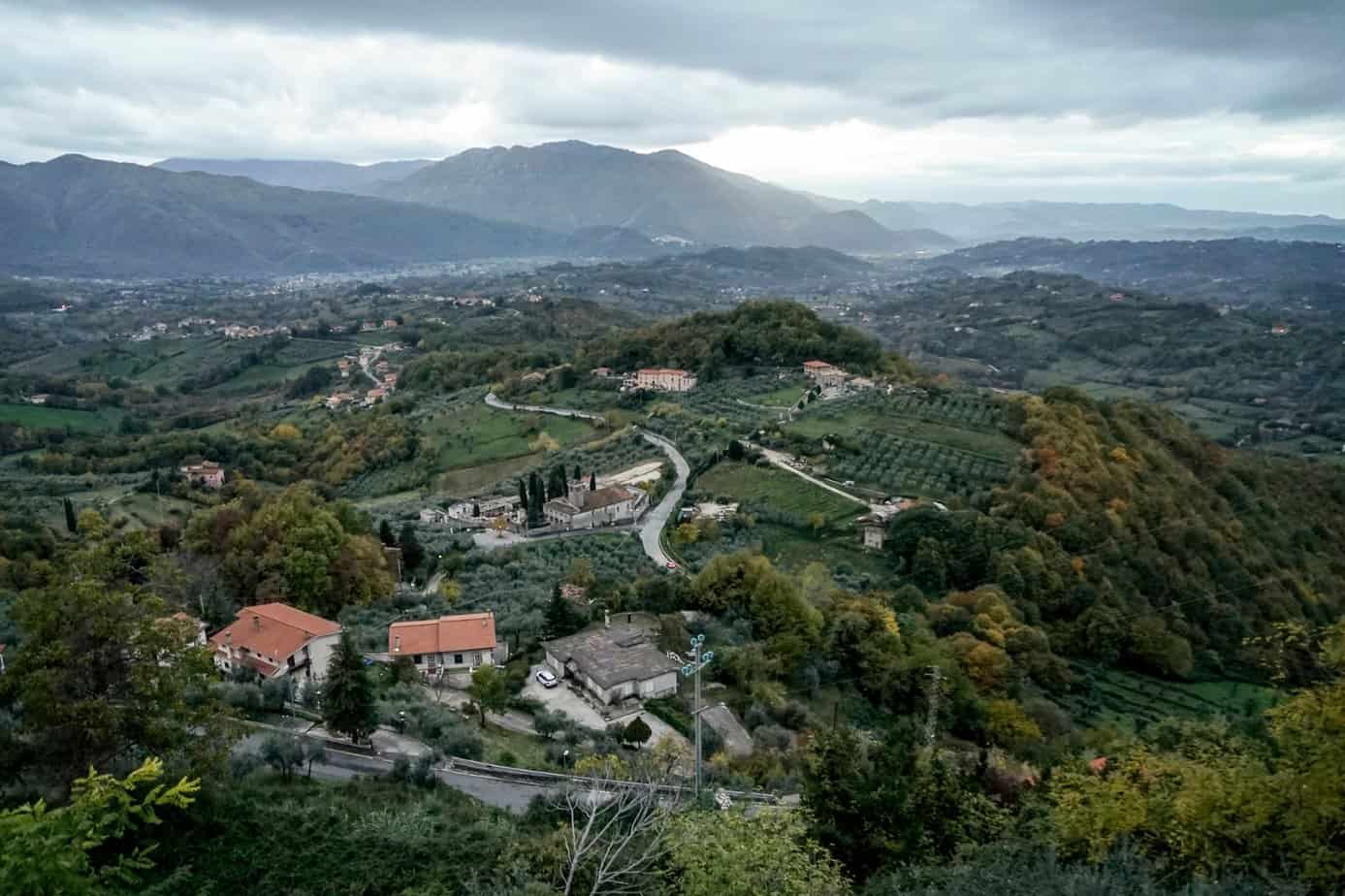
Picinisco, Lazio (1,200)
We just returned from assignment here in November and can’t wait to return. Picinisco is a small agricultural village situated at 2,625 feet a Frisbee throw from Abruzzo National Park. Go to Piazza Ernesto Capocci, the town center, and stare down at the vast patchwork of farmland below.
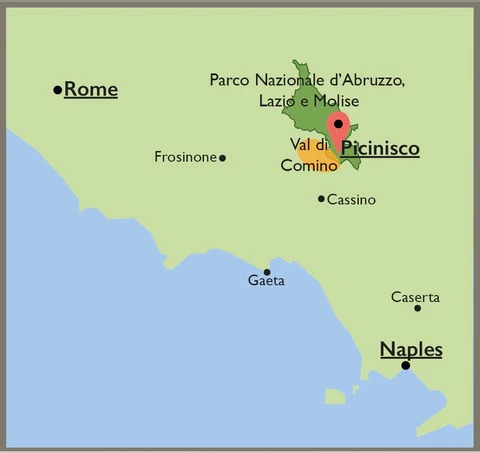
Known primarily as one of Italy’s two immigrant pipelines to Scotland, Picinisco is the center of Valle di Comino, a region of farms producing olives, wine, livestock and arguably the best Pecorino cheese in Italy. English travel writer D.H. Lawrence loved the tranquility so much he wrote part of “The Lost Girl” in a farmhouse that you can visit. They renamed it Casa Lawrence.
Stay at Villa Inglese, a 100-year-old Art Nouveau building turned B&B where seasoned English chef Ben Hirst produces mouthwatering meals using all local ingredients.
How to get there: Rent a car. The closest train station is at Cassino 18 miles (30 kilometers) away. Rental cars in Rome start at about €25 a day.
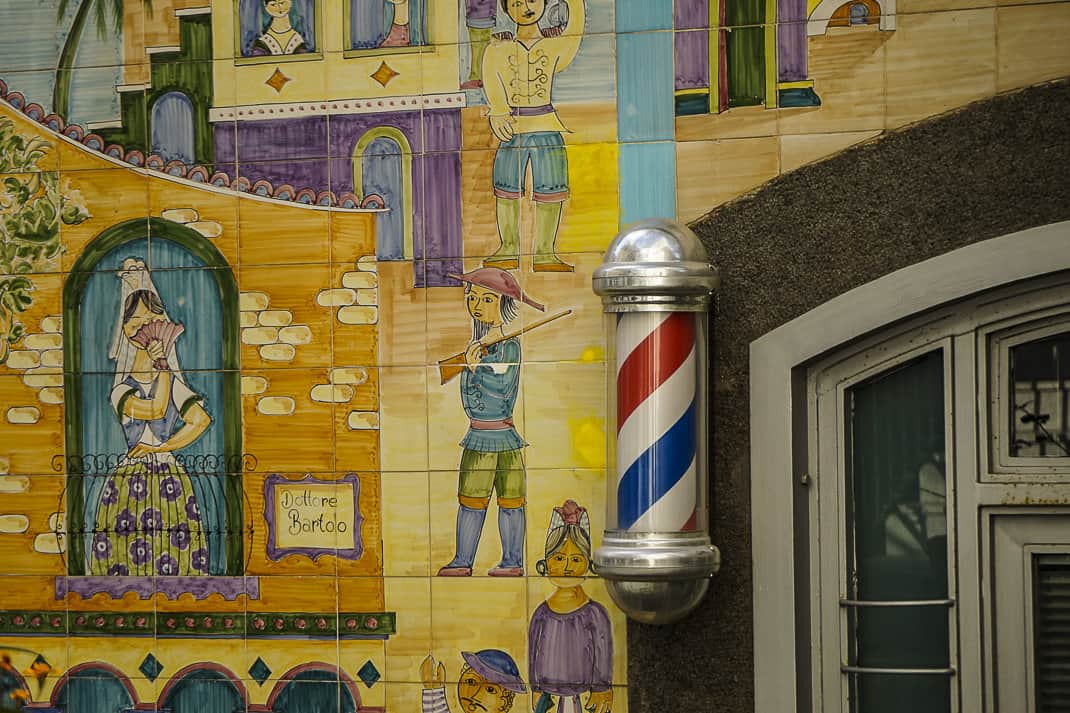
Vietri sul Mare, Campania (7,800)
Vietri sul Mare is to the Amalfi Coast what La Spezia is to Cinque Terre. In fact, Vietri is known as The Gateway to the Amalfi. It’s the southernmost town of the string of pearls along the sea. Like the others, Vietri also has cliffside balconies overlooking the Tyrrhenian, windy alleys and fantastic seafood.

It just doesn’t have the big name or the crowds. However, still avoid it in July and August and on weekends. Weekdays in the offseason are ideal. We went for Valentine’s Day and it was the perfect romantic, Italian getaway.
Vietri is one of Italy’s ceramics capitals. Ceramics are everywhere. You can buy everything from salt and pepper shakers to entire table sets. You can even buy them during a visit to the huge Ceramica Artistica Solimene factory.
The food is excellent. Located only 30 miles southeast of Naples, pizza’s birthplace, you get true Neapolitan pizza in Vietri. Locals all head to Da Giufe’ for the best local variety. For seafood, dine on the sea at Dal Pescatore where you can see the day’s catches in a glass display case.
How to get there: Vietri sul Mare is a 3-hour, 20-minute train ride from Rome, including a short changeover in Salerno. Price is about 30 euros.


December 27, 2022 @ 3:55 pm
Happy Holidays, John: Only been to one of those so your tips are appreciated. That’s the beauty of Italy: Each big city is surrounded by small gems. Well, here with family in Vegas, tally for questions about Italy still rests at zero. We’ll see!
December 27, 2022 @ 4:34 pm
I dont see anything listed for Sicily, Basillicata, or Puglia. Any suggestions for those areas? I have read your previous blogs on Sicily. we will be there 5 or 6 weeks beginning end of March (as of right now).
December 27, 2022 @ 6:19 pm
I’ll check some out. Vietri is wonderful. Calabria and Puglia have many wonderful small villages. I visit these areas often. Molise and Abruzzo are on my list to explore. So many areas in Italy to see. I hope to cover all from north to south.
December 28, 2022 @ 12:27 am
Great article and helpful thank you for sharing, as a photographer I am so happy to see someone give a credit to the photographer, nice work Marina. Happy Hollidays to both of you.
December 28, 2022 @ 6:34 pm
Thank you for sharing your wisdom! I’ll be getting back out there soon!